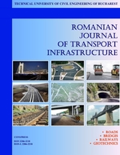
Romanian Journal of Transport Infrastructure
Scope & Guideline
Empowering Transportation Insights for Global Impact
Introduction
Aims and Scopes
- Transport Safety and Public Health:
The journal addresses issues related to road safety, emphasizing the impact of transport systems on public health and the effectiveness of safety measures. - Infrastructure Monitoring and Management:
It covers methodologies for monitoring and maintaining transport infrastructure, including structural health monitoring of bridges and slopes, ensuring the longevity and reliability of transport systems. - Sustainable Transport Solutions:
The journal emphasizes research on sustainable practices in transport, including recycling materials, energy-efficient transportation methods, and the integration of green technologies into transport infrastructure. - Traffic Engineering and Modeling:
Research on traffic flow, signal control, and the impact of various factors on traffic dynamics is a core area, utilizing advanced modeling techniques such as artificial neural networks. - Material Science in Transport Infrastructure:
Investigations into materials used in transport infrastructure, including asphalt mixtures, concrete properties, and innovative materials for construction and maintenance.
Trending and Emerging
- Integration of Artificial Intelligence in Transport:
There is a growing trend in utilizing artificial intelligence for traffic management and infrastructure monitoring, indicating a shift towards data-driven decision-making processes. - Focus on Sustainable and Circular Economy Practices:
Emerging research themes are increasingly centered around sustainability, including the recycling of materials and energy-efficient designs that contribute to a circular economy. - Advanced Monitoring Techniques for Infrastructure:
The use of innovative monitoring techniques, such as drone photogrammetry and thermal imaging, is on the rise, showcasing a commitment to improving infrastructure assessment and management. - Public Transport Optimization:
Recent studies emphasize improving public transport systems through multimodal approaches and the enhancement of service levels, reflecting a growing interest in urban mobility solutions. - Addressing Climate Change Impacts on Transport:
Research exploring the resilience of transport infrastructure to climate change and the incorporation of climate action strategies is becoming increasingly relevant.
Declining or Waning
- Traditional Traffic Studies:
Research focused solely on traditional traffic flow and congestion issues has decreased as newer methodologies and technologies, such as artificial intelligence applications, gain traction. - Basic Infrastructure Design Principles:
There is a noticeable reduction in studies that solely address basic design principles of infrastructure, as the focus has shifted towards advanced modeling and innovative construction materials. - General Environmental Impact Assessments:
Research on generic environmental impacts of transport systems is less frequent, with a shift towards more specific studies that integrate technology and sustainability.
Similar Journals
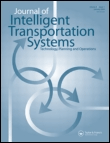
Journal of Intelligent Transportation Systems
Advancing the Future of Transportation TechnologyThe Journal of Intelligent Transportation Systems is a premier peer-reviewed journal published by Taylor & Francis Inc, focusing on cutting-edge research in the fields of transportation systems and intelligent technologies. With an ISSN of 1547-2450 and an E-ISSN of 1547-2442, this journal stands out with its impressive impact, consistently ranking in the Q1 Quartile across multiple categories such as Aerospace Engineering, Applied Mathematics, and Automotive Engineering, among others. As of 2023, it holds distinguished Scopus rankings, including a remarkable #11 position in Aerospace Engineering, showcasing its significance in shaping contemporary research in intelligent transportation. Targeted at researchers, professionals, and students alike, the journal provides a forum for the dissemination of innovative ideas and technologies that enhance transportation systems’ efficiency, safety, and sustainability. The Journal of Intelligent Transportation Systems has been operating since 2004 and continues to play a vital role in advancing knowledge within its respective areas of study within the United Kingdom and globally.

Baltic Journal of Road and Bridge Engineering
Advancing Infrastructure: Bridging Ideas and InnovationThe Baltic Journal of Road and Bridge Engineering, published by RIGA TECHNICAL UNIV-RTU, serves as a pivotal platform for disseminating cutting-edge research in the fields of building and construction as well as civil and structural engineering. Established as an Open Access journal since 2006, it fosters global collaboration and accessibility to critical engineering knowledge, facilitating the exchange of innovative ideas among researchers, professionals, and students. With a commendable impact factor and recognition in Scopus rankings, where it stands in the third quartile for both relevant engineering categories, the journal underscores its significance in advancing the discipline. The journal aims to publish high-quality, peer-reviewed articles that address contemporary challenges in road and bridge engineering, making it an essential resource for anyone involved in infrastructure development and research. Located in Lithuania at 6B Kipsalas Street, RIGA LV-1658, this journal not only highlights the latest advancements but also seeks to inspire future innovations in engineering practices.

European Transport-Trasporti Europei
Pioneering Knowledge in European Transport IntegrationEuropean Transport-Trasporti Europei is a prominent academic journal dedicated to advancing knowledge in the fields of automotive engineering and transportation, with a focus on European integration and innovation. Published by UNIV STUDI TRIESTE and housed within the esteemed IST STUDIO TRASPORTI INTEGRAZIONE ECON EUROPEA-ISTIEE, this journal plays a crucial role in disseminating original research, case studies, and reviews that address the complexities of transport systems across Europe. With an ISSN of 1825-3997 and an established presence since 1995, the journal has steadily gained recognition, currently holding a Q3 classification in both Automotive Engineering and Transportation, reflecting its increasing impact in these domains. The journal features open access options, enhancing accessibility for researchers and practitioners alike. By bridging theoretical frameworks and practical applications, European Transport-Trasporti Europei serves as a vital resource for academics, industry professionals, and students committed to understanding and shaping the future of transport in a rapidly changing world.

Case Studies on Transport Policy
Transforming urban landscapes with impactful transport policies.Case Studies on Transport Policy, published by Elsevier, is an influential journal in the fields of transport policy, urban studies, and geographic planning. With its ISSN 2213-624X and E-ISSN 2213-6258, this quarterly journal has consistently maintained a strong impact within its scope, attaining Q1 rankings in Geography, Planning and Development and Urban Studies, as well as a Q2 ranking in Transportation for 2023. The journal provides a platform for high-quality research and practical case studies that contribute significantly to the understanding and improvement of transport systems and policies worldwide. Its rigorous peer-review process ensures that published articles are of the highest academic standard, appealing to researchers, policy-makers, and professionals alike. With a strong presence in several social sciences categories, the journal ranks highly in Scopus, positioning itself as a critical resource for those engaged in the strategic development and analysis of transport solutions. Located in Amsterdam, Netherlands, it aims to bridge the gap between research and real-world applications, facilitating knowledge exchange and innovative strategies in transport policy.

Journal of Transportation Engineering Part A-Systems
Advancing Transportation Systems Through Innovative ResearchThe Journal of Transportation Engineering Part A-Systems, published by the American Society of Civil Engineers (ASCE), is a cutting-edge, peer-reviewed journal dedicated to the advancement of knowledge in the field of transportation systems. With an ISSN of 2473-2907 and an E-ISSN of 2473-2893, this journal serves as a crucial resource for researchers, professionals, and students interested in the intricate interplay between civil engineering and transportation networks. Boasting a Q2 ranking in both the Civil and Structural Engineering and Transportation categories, this journal reflects the high-quality research contributing to these vital disciplines. Accessible through open-access options, the journal provides a platform for innovative ideas and research findings from 2017 to 2024, aiming to address contemporary challenges in transportation systems while fostering interdisciplinary collaboration. As an essential outlet for scholarly work in the United States and beyond, the Journal of Transportation Engineering Part A-Systems is committed to enhancing the understanding of complex transportation dynamics and the development of sustainable and efficient infrastructures.

Transport Policy
Driving impactful policy through interdisciplinary insights.Transport Policy, published by Elsevier Science Ltd, is a leading international journal dedicated to advancing the understanding of transport systems and their policies. With an esteemed Q1 ranking in the fields of Geography, Planning and Development, Law, and Transportation, this journal stands out as a pivotal resource for researchers, professionals, and students alike. Recognized for its rigorous peer-reviewed articles, Transport Policy amalgamates interdisciplinary approaches to address critical issues in transportation governance, sustainability, and regulatory frameworks. As part of its mission to disseminate high-quality research, the journal supports significant findings that enhance policy-making and transport strategies globally. With a firm commitment to advancing scholarly discourse, Transport Policy continues to shape the landscape of transportation research through comprehensive studies that reflect contemporary challenges and innovative solutions. For those invested in the future of transport and policy, this journal is an essential cornerstone of knowledge and insight.
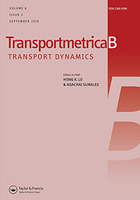
Transportmetrica B-Transport Dynamics
Driving Innovation in Transport ResearchTransportmetrica B: Transport Dynamics is a premier academic journal published by Taylor & Francis Ltd, focusing on innovative research in the fields of transportation dynamics, modeling, and simulation. Established in 2013 and running through 2024, this journal holds a prestigious Q1 ranking in Modeling and Simulation, Software, and Transportation categories, reflecting its commitment to high-quality scholarship. With an impactful presence, evidenced by its Scopus rankings—73rd in Mathematics, 57th in Social Sciences, and 174th in Computer Science—Transportmetrica B serves as a critical platform for researchers, professionals, and students seeking to explore and disseminate groundbreaking findings in transport dynamics. The journal is accessible via open access options, ensuring that its valuable insights reach a global audience. As the field of transport continues to evolve, Transportmetrica B remains at the forefront, championing extensive research and development that address the challenges of modern transportation systems.

PROCEEDINGS OF THE INSTITUTION OF CIVIL ENGINEERS-TRANSPORT
Exploring New Horizons in Civil and Structural EngineeringPROCEEDINGS OF THE INSTITUTION OF CIVIL ENGINEERS-TRANSPORT, published by Emerald Group Publishing Ltd, is a vital scholarly journal dedicated to advancing knowledge in the fields of civil and structural engineering and transportation. With an ISSN of 0965-092X and an E-ISSN of 1751-7710, this journal has been a cornerstone of academic discourse since its inception in 1992, providing a platform for innovative research and case studies up until 2024. Although it currently holds a Q4 quartile ranking in both Civil and Structural Engineering and Transportation categories, its content aims to bridge gaps in existing literature, making it a relevant source for researchers, professionals, and students alike. The journal offers an array of insightful articles that contribute to the evolution of engineering practices and transportation methodologies, fostering a global dialogue among industry stakeholders. While it operates under a subscription model, the journal remains committed to enhancing public access to pivotal findings in engineering disciplines, driving forward the agenda of sustainable and efficient infrastructure development.
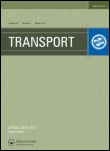
Transport
Driving the future of automotive and mechanical engineering.Transport is a leading open-access journal published by VILNIUS GEDIMINAS TECH UNIVERSITY, specializing in the fields of automotive and mechanical engineering. Since its transition to open access in 2018, the journal has become a vital platform for disseminating high-quality research and innovative practices in transport systems, engineering technologies, and sustainable mobility solutions. With an ISSN of 1648-4142 and an E-ISSN of 1648-3480, Transport is indexed in Scopus with notable rankings, including Q2 in Automotive Engineering and Q3 in Mechanical Engineering for 2023, reflecting its influential presence within these disciplines. Researchers and practitioners are encouraged to contribute to this scholarly community, where their work will reach a robust international audience, thereby advancing knowledge and fostering collaborations in the ever-evolving transport sector. Based in Lithuania, the journal is committed to maintaining rigorous peer-review standards and promoting interdisciplinary studies to address the complex challenges in transportation engineering.
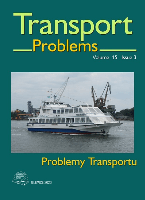
Transport Problems
Pioneering Research for Global Transport ChallengesTransport Problems, published by the Silesian University of Technology, Faculty of Transport, is a distinguished open-access journal that has been advancing scholarship in the fields of Automotive Engineering, Mechanical Engineering, and Transportation since its inception in 2007. With an ISSN of 1896-0596 and an E-ISSN of 2300-861X, this journal serves as a vital platform for researchers and practitioners to disseminate innovative research findings and explore fundamental issues in transport systems and technologies. Based in Poland, the journal covers various topics including transportation logistics, vehicle dynamics, and environmental impacts, thereby addressing critical challenges faced in the transportation sector globally. As reflected in its Scopus rankings, the journal occupies respectable quartiles and continues to contribute valuable insights to the academic community. By making its content freely accessible, Transport Problems significantly enhances the ability of researchers and students alike to engage with the latest developments in transport engineering and contribute to this ever-evolving field.